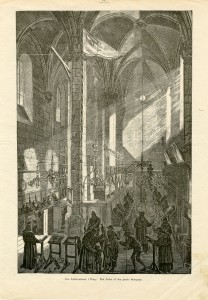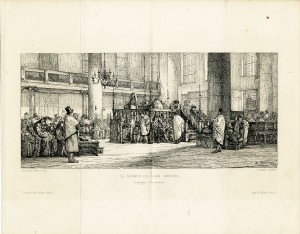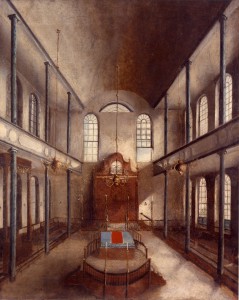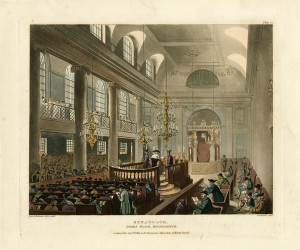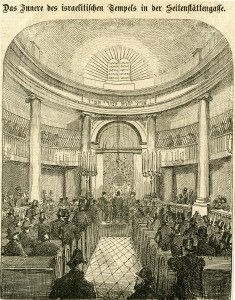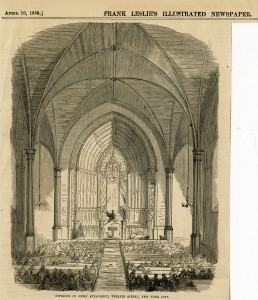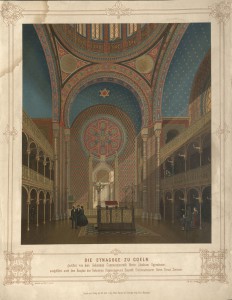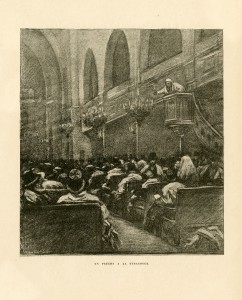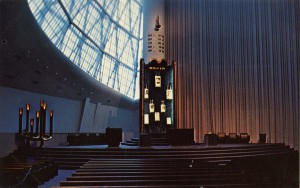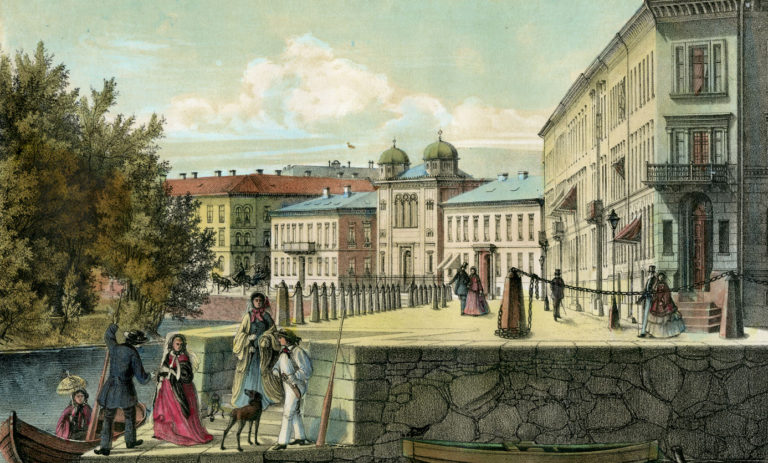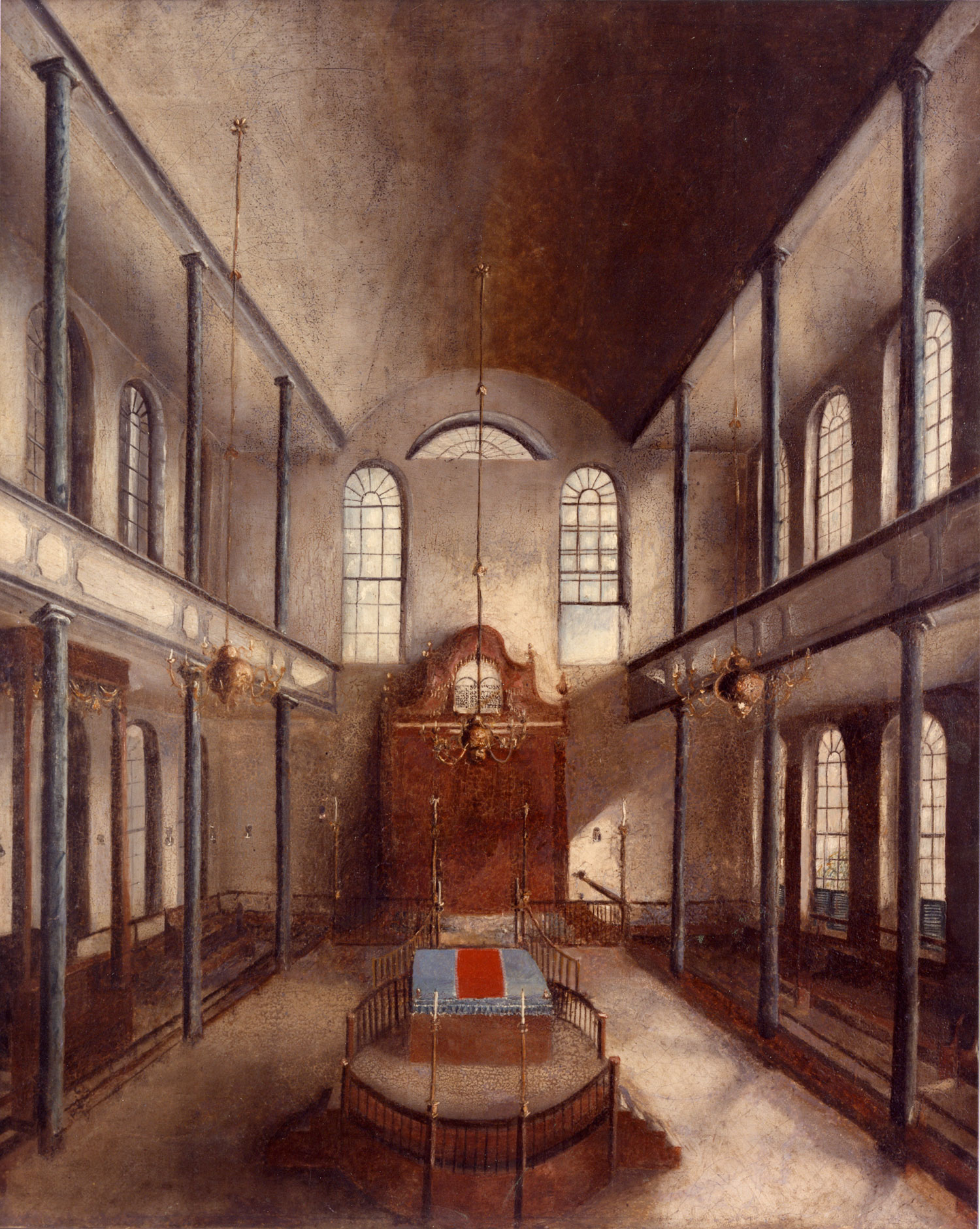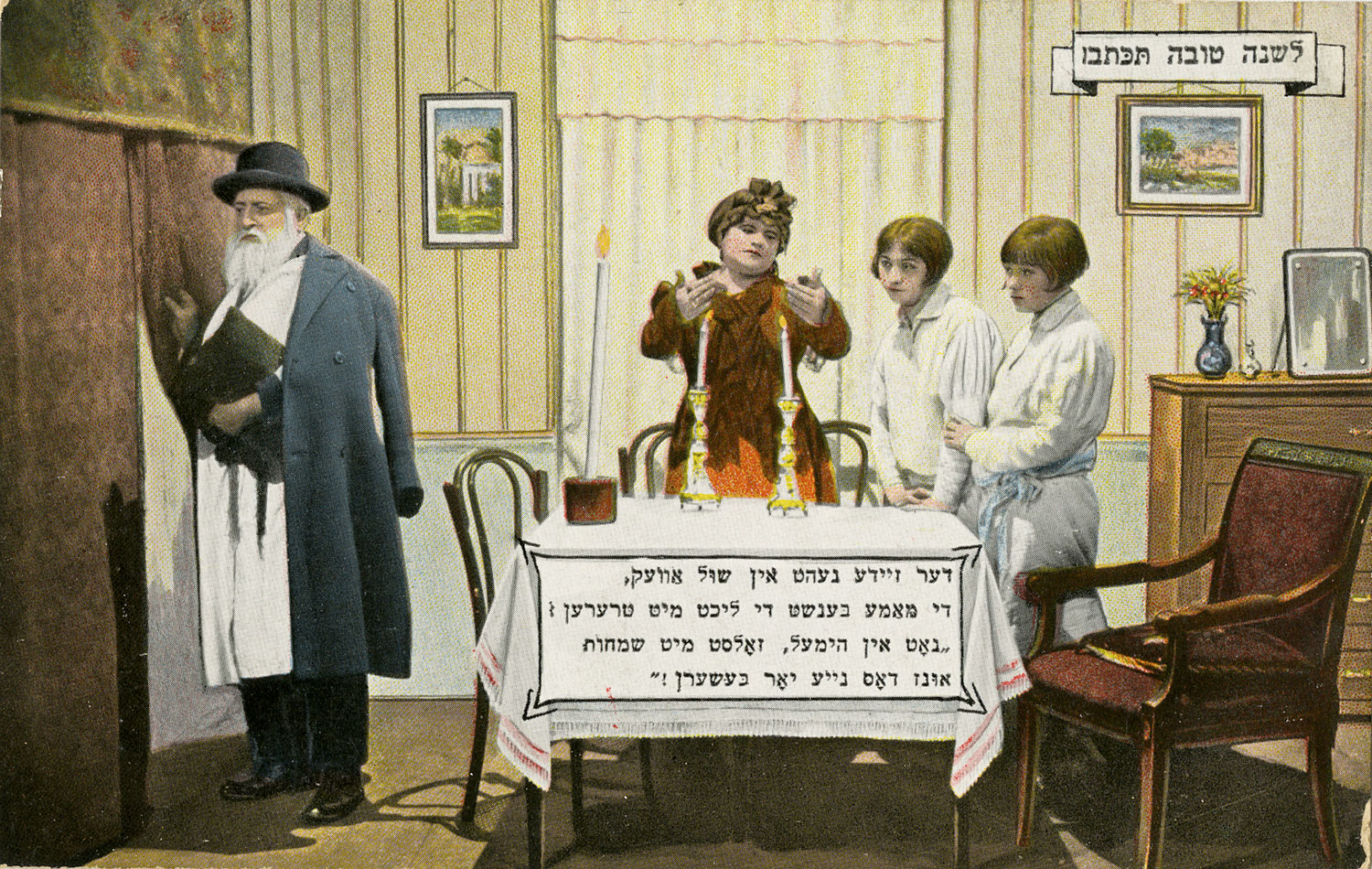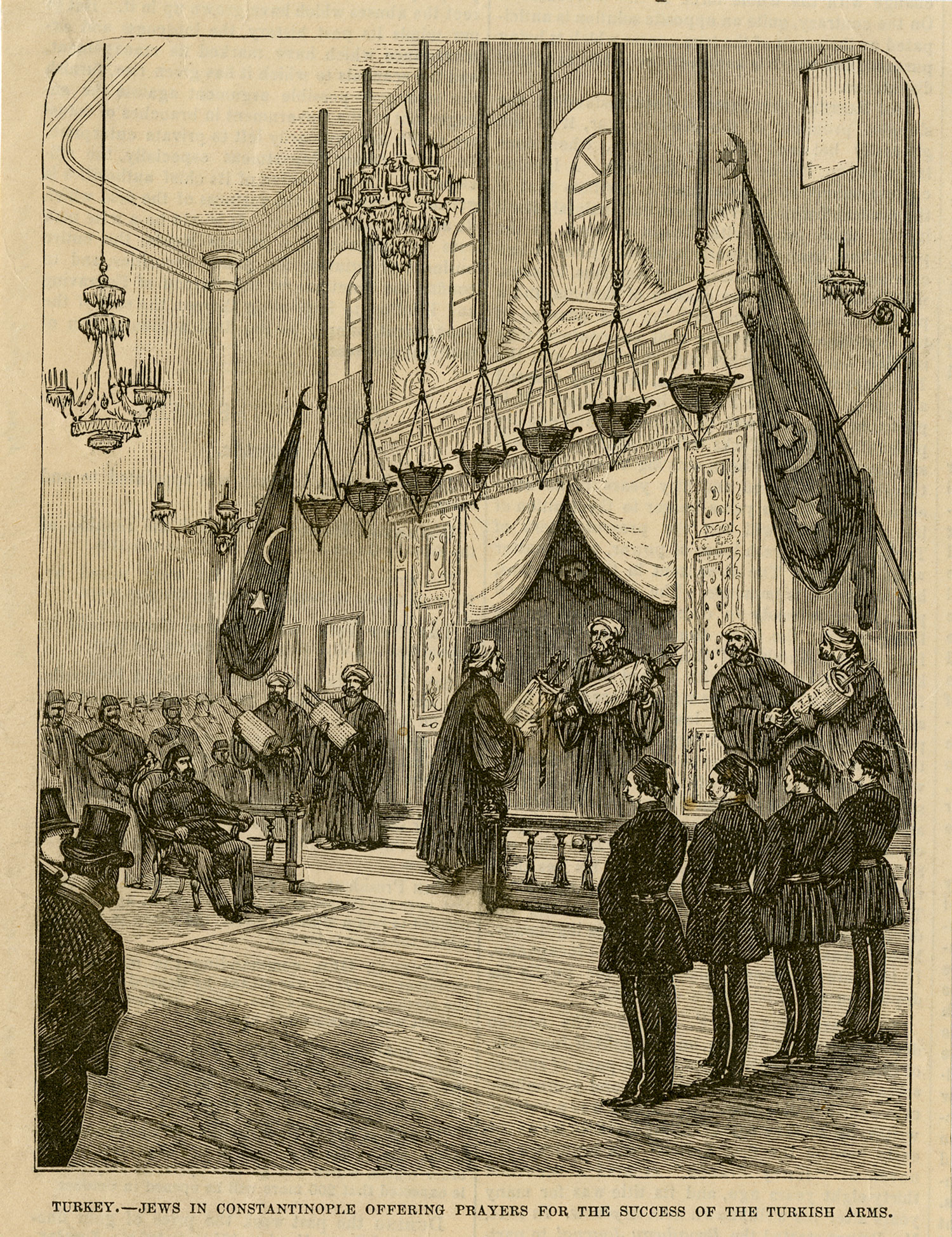Section 3. Inside the Synagogue
There is no single synagogue type, and not all synagogues are architecturally distinctive. Indeed, many Jewish congregations, especially when new and poor, merely adapt existing spaces for their religious purposes. Every synagogue, however, must have certain essential features, and other elements dictated by religious practice and tradition are expected as well.
First and foremost, the ark, the cabinet which holds the Torah scrolls, and the bimah, the platform where the leader of the service stands and from which the Torah is read, are constant in all synagogues, no matter when and where they are built, or what decorative style they adopt. The physical relationship between ark and bimah reflects their roles in the Jewish service and creates a strong dynamic.
In early synagogues, the Torah scrolls were kept in movable chests whose surfaces might also have served as readers’ tables. By the 16th century, it was common for the ark to be a substantial architectural component of the interior design, sometimes built into the wall closest to Jerusalem, or sometimes constructed as an attached element of furniture. The ark can be made of any material, and be any size or shape. Frequently, it is adorned with architectural elements, especially columns, Jewish symbols, and inscriptions.
Three basic arrangements of the ark and bimah dominate. In the Sephardi tradition, ark and bimah often are placed at opposite ends of the room, and the congregation sits facing the axis between them. Traditional Ashkenazi synagogues tend to position the bimah more centrally. In modern times, Conservative and Reform Jews have moved the bimah to the front of the congregation immediately before the ark.
There is a mandate in the Jerusalem Talmud that “a synagogue should have great light.” This recommendation stems from the biblical verse “I have not spoken in secret, in a place of darkness” (Isaiah 45:19). Windows are always preferred, as light is needed for reading, and there is symbolic meaning to light. Builders have additionally incorporated whatever artificial sources of light technology offered. In early views of synagogues, we see simple candles on ledges, elaborate candelabras, and chandeliers; in the 19th century, gas and then electric lighting were introduced.
No strong traditions in Judaism govern the decoration of synagogue interiors, though their design and ornamentation often have been the object of considerable artistic effort. The concept of hiddur mitzvah (beautification of the commandment) has given license for painted walls, stained glass windows, and especially “dressing” the Torah scrolls themselves with ornate textiles and metalwork.
Decoration of synagogues with representation and narrative art was common in Antiquity and became more popular in the 20th century, but, to generalize, most synagogue decor consists of inscriptions and abstract designs. More than ornamentation, it is the activity of the service and the sound of prayer that animates the synagogue space.
